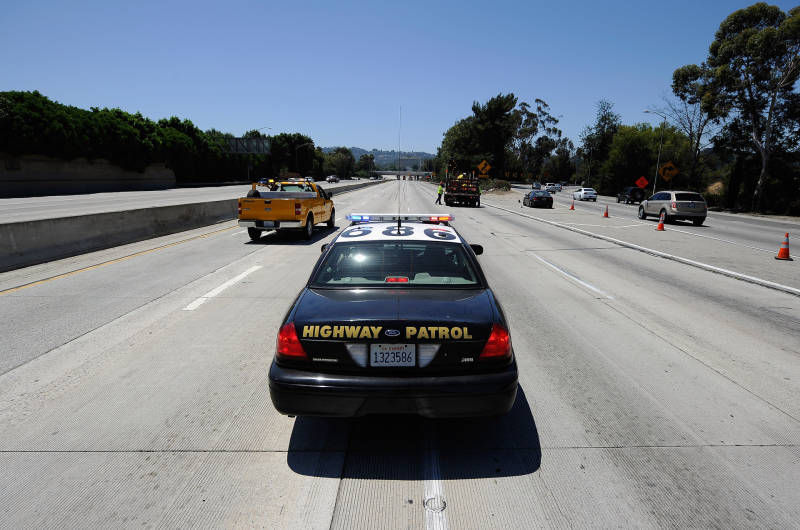“[It’s] not just how I look, [it’s] how the car looks,” he said, laughing. “It can look various different ways. I may have a hole in my bumper, anything. I may have a dent in the door. I may have a dent in all four doors.”
He said he mailed his amnesty application to the court in October right after the program launched in order to try and get his suspended license back and deal with five unpaid tickets worth about $6,000. In March, he finally found out that he qualified, but he said he still can’t afford the payments of $250 per month set up by Alliance One, the debt collection agency contracted by San Francisco Superior Court to administer the amnesty program. (They receive about 15 percent of any municipal debt they collect.)
“I’m not employed,” he said. “So it’s going to be kind of complicated.” He said he’s been looking for work for a year and a half, but without a license it’s really hard to get a job.
Michael Carr, director of the city’s Office of Economic and Workforce Development’s Workforce Division, said many low-income people can’t get work because of suspended licenses. (Even the city’s own construction training program, CityBuild, requires applicants to have a driver’s license.)
Staff with the OEWD and the Treasurer’s Office of Financial Empowerment have been helping clients take advantage of the governor’s traffic amnesty program, but said it hasn’t been easy.
Yolanda Gutierrez is a case manager with Young Community Developers in San Francisco. She helps low-income residents like Tucker find work. And she said a good part of her job lately is making calls on behalf of clients to Alliance One.
“Sometimes I’ve been on hold for two hours and a half,” she said. “Not everyone has the time to sit on the phone and wait for Alliance One to pick up a call. A lot of my clients are working, they’re in school. They’re trying to get back on their feet.”
Gutierrez said the process itself is very complicated, and some of her clients have tickets in multiple counties. Each county’s traffic court has set up a different amnesty application process, which means a different set of hoops and a nonrefundable $50 application fee for each county. She also said it is taking months to hear back about when an applicant qualifies.
An Alliance One representative said in an email that the company has hired and trained more staff to deal with amnesty, and that the courts are responsible for the long delays in application processing. Meanwhile, the courts say they are overwhelmed and don’t have enough resources.
“The thing to keep in mind with amnesty is this is not a funded program,” said Michael Yuen, executive officer for San Francisco Superior Court. “Courts were basically told that we have implement this program, but we have the sad reality of trying to balance all of our other obligations.”
The law does allow courts to recover their operating costs, but Yuen’s office said it still isn’t enough. Yuen said the court is trying to do the best it can and, in the spirit of amnesty, his office has stopped placing license holds on delinquent accounts since November.
Overall, court officials said they are trying to streamline the process in order to have as many people as possible get back on the road before amnesty ends on March 31, 2017. But what happens after that?
Theresa Zhen, a lawyer with A New Way of Life Reentry Project in Los Angeles who helps formerly incarcerated people handle license suspensions and tickets, said amnesty is helping people, but the fundamental unfairness of the system hasn’t been fixed.
“Even now, as the amnesty program is in effect, those same processes that led to the 4.2 million license suspensions in just a five-year period -- those processes are still ongoing," she said. "And they’re still creating harm in low-income communities.”
The amnesty program is just a first step in the right direction, said Martin Hoshino, administrative director of the Judicial Council. He’s also on a national taskforce looking at traffic fee reform. But he said the court alone can’t just slash fees. Here in California, state and local programs depend on the nearly $2 billion raised by traffic fines.
“The great recession brought us to the point where there’s now a gap in what we assess and what people actually have the ability to pay,” he said.
But Hoshino said his hope is that this national conversation will ultimately help make traffic courts more just.
